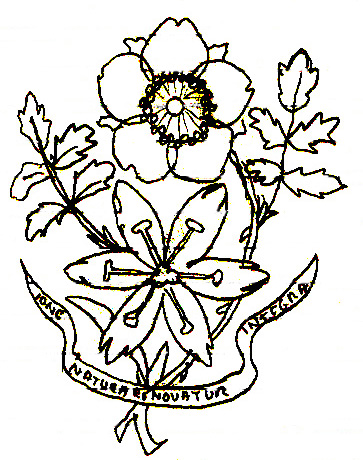


The Lily and the Rose is a symbol attributed to the Rosicrucians. It represents the integration of six and five. This seemed an appropriate symbol for the idea of reconciling the apparently contradictory models within Chinese medicine. Six is a number important in Yin-Yang doctrine (as are all even numbers) and five represents the five elements. To the left is the Five Elements and to the right the Ba Gua (Eight Trigrams). The Tai Ji (Yin-Yang diagram) is appropriately in the centre of both. The motto below the Lily and Rose is an alchemical saying: "Igne Natura Renovatur Integra", By Fire is Nature Renewed Whole' or 'The Whole of Nature is renewed by Fire'.
Harmony Gate Publications
The most comprehensive compendium of acupuncture point names yet! Including commentary from diverse sources, representing multiple acupuncture traditions.
Compiled and written by Andrew A. Prescott, B.Ac. (UK), Dipl.Ac.(NCCAOM), L.Ac.(NC)
A fuller description and preview is available here.
Click on the link above to view this book on Lulu.com or add to Lulu shopping cart now.
Select Bibliography:
Hawking, Stephen & Mlodinow, Leonard; The Grand Design, Bantam, 2010
Nisbett, Richard: The Geography of Thought, Free Press, 2003
Aczel, Amir D.; Finding Zero: A Mathematicians’ Odyssey to Uncover the Origin of Numbers,
The following are miscellaneous articles.
Acupuncture and the 50 minute hour. This is a response to an article written by Bob Flaws in Acupucnture Today in which he criticised the common practice of treating patients once a week. This practice is common in Five Element approach and is found to make a great deal of sense in western clinical practice.
External Links:
There is a website devoted to Classical Chinese Medicine.
I particularly recomend the works of Heiner Fruehauf.
Chinese Character Links:
Zhong Wen is a particularly good resource. Traditionally characters have been classified under radicals. This author has developed family trees of characters based upon their various components. It is mainly common characters, and so is not comprehensive.
The author has assembled a very comprehensive site that enables one to view up to date etymology and very comprehensive of older and less common characters.
Note the etymologies in the above two resources often differ from older explanations and from each other. Examination of the older examples in the latter site enables us to compare the merits of the various ideas.
This resource of characters included in the modern unicode based computer fonts. Very comprehensive, but often there are no definitions given for many uncommon characters.
©Andrew Prescott 2006
Do give me your feedback and comments.
Contact: Andrew Prescott B.Ac.(UK), Dipl.Ac(NCCAOM), L.Ac.(NC).

